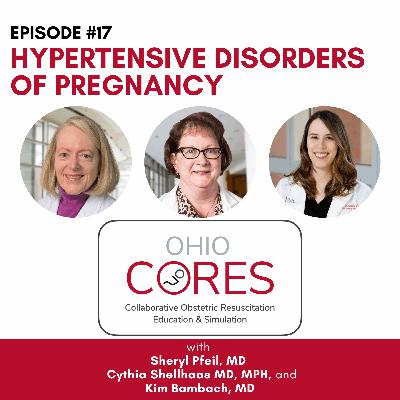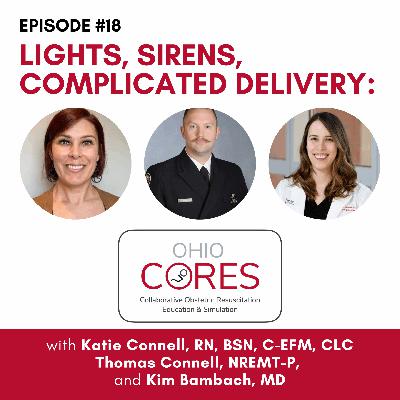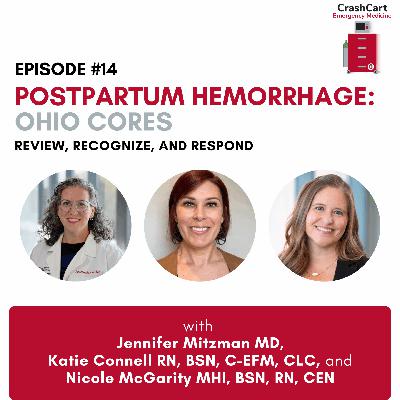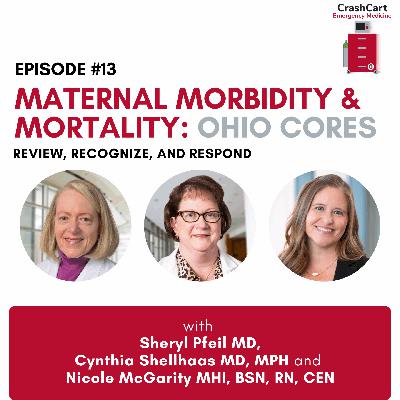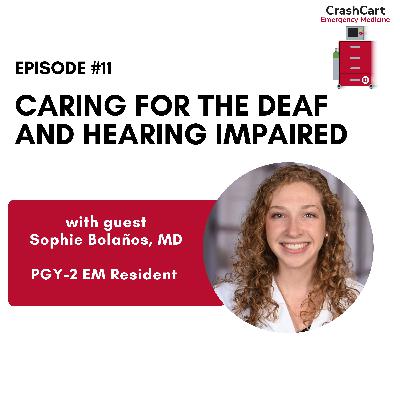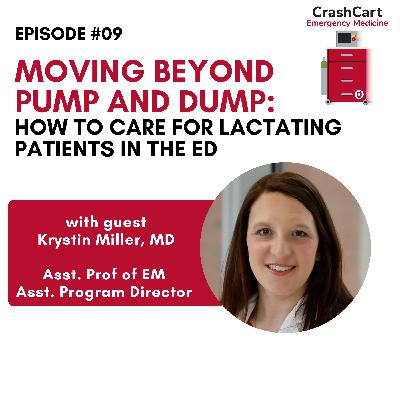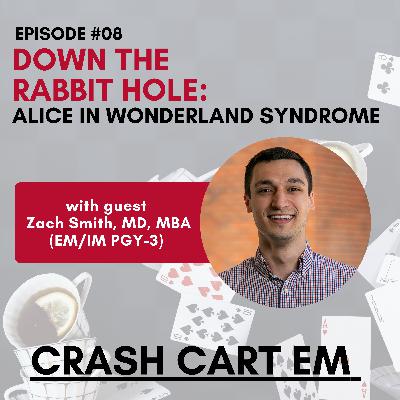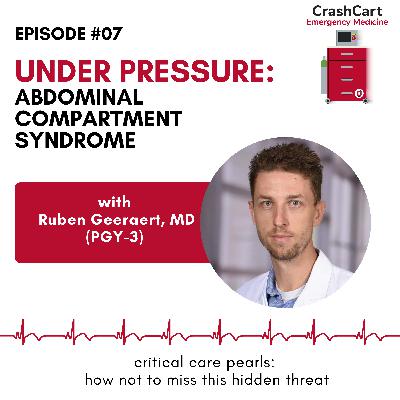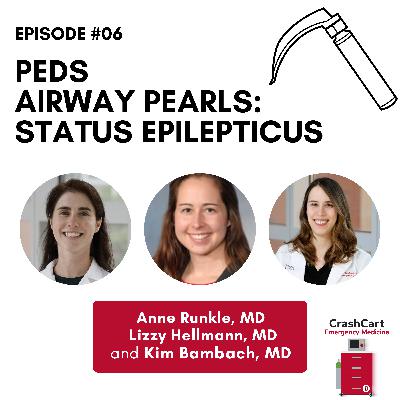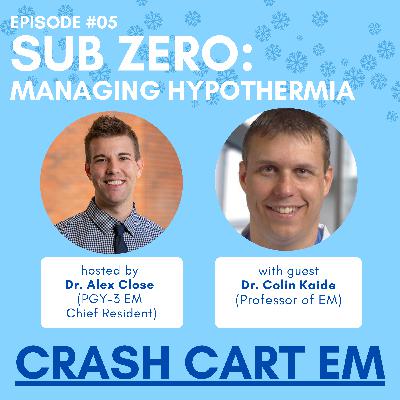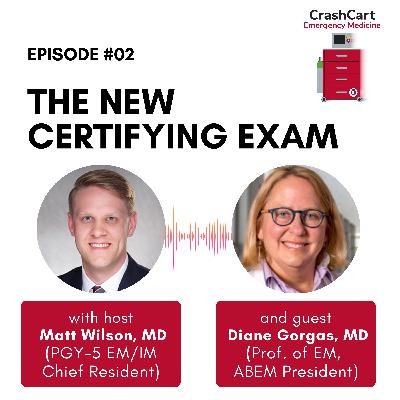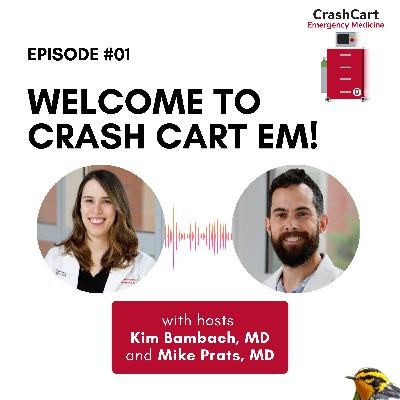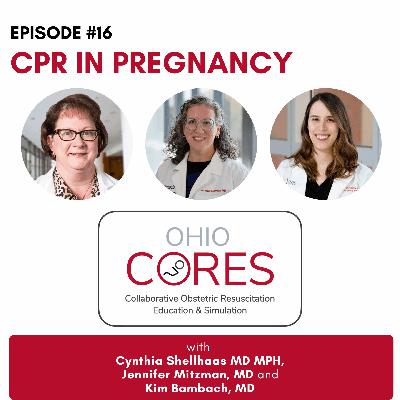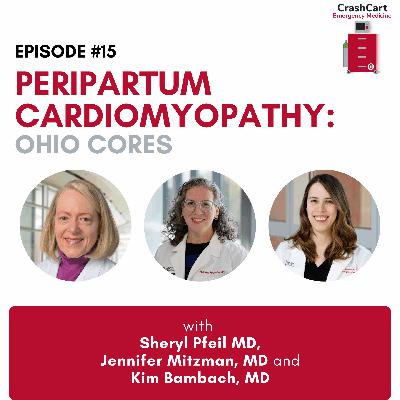Hypertensive Disorders of Pregnancy: Ohio CORES Series
Description
Are you prepared for an OB emergency? In this special six-part podcast series, the Ohio CORES team at The Ohio State University explores the management of pregnant and postpartum women in emergency situations. Each episode focuses on a high-stakes obstetrics scenarios, including: 1) maternal morbidity and mortality, 2) postpartum hemorrhage, 3) hypertensive emergencies, 4) cardiac arrest in pregnant patients, 5) peripartum cardiomyopathy, and 6) complicated vaginal deliveries. Whether you’re in the field, ED, ICU, or on L&D, this series equips you with the knowledge to respond when seconds count.
Ohio CORES (Collaborative Obstetric Resuscitation Education and Simulation) is an interdisciplinary team of educators from The Ohio State University dedicated to improving care for pregnant and postpartum women in critical condition through high-impact education and simulation training. Supported by funding from the Ohio Department of Children and Youth, Ohio CORES delivers obstetric emergency education to healthcare providers across the state.
In this episode of Crash Cart EM, we continue our podcast series dedicated to obstetric emergency care. This episode focuses on pre-eclampsia and hypertensive disorders of pregnancy, which are a leading cause of maternal morbidity and mortality. We’ll discuss key definitions, trends, and critical management strategies including the importance of timely interventions like magnesium sulfate and antihypertensive therapies. This episode underscores the necessity of interdisciplinary collaboration and provides actionable insights for emergency and OB providers to address hypertensive emergencies effectively across care settings.
Guests: Cynthia Shellhaas, MD, MPH; Kimberly Bambach, MD
Host: Sheryl Pfeil, MD
Editors: Amy Helder; Katie Connell, RN, BSN, C-EFM, CLC Nicole McGarity, MHI, BSN, RN, CEN; Cynthia Shellhaas, MD, MPH; Kim Bambach, MD
1. Why It Matters
- Hypertensive disorders are among the leading causes of pregnancy-related deaths
- Hypertensive disorders increase risk to both mom (seizure, stroke, increased need for C section, etc.) and baby (growth restriction, preterm birth, stillbirth, respiratory distress, etc.)
2. Preeclampsia: The Basics
- New-onset hypertension ≥140/90 after 20 weeks + proteinuria or other signs of end organ damage
- Severe range: ≥160/110
- Can occur up to 12 weeks postpartum, even in patients with a normal pregnancy
- Postpartum preeclampsia is often overlooked
3. Recognition is Key
- Ask every reproductive-aged woman: Are you pregnant or have you been in the past year?
- Look for red flags: headache, RUQ pain, shortness of breath, edema, seizure (eclampsia)
4. Treatment Principles
- Act fast—this is not benign chronic hypertension
- Treat BP ≥160/110 promptly:
- Labetalol IV or Nifedipine PO
- If seizing, give magnesium sulfate (IM or IV)
- Always assess for airway compromise and monitor closely
5. When to Transfer
- Pregnant or postpartum patient with hypertensive emergency → transfer to OB-capable hospital
- Use medical transport if unstable or severe-range BP
- Don’t delay- delivery may be the only definitive treatment
6. EMS & Rural Settings
- EMS plays a vital role in early recognition and communication
- Frameworks such as SBAR (Situation, Background, Assessment, Recommendation) and MIST (Mechanism, Injuries, Signs, Treatments) can convey key hand-off information
- Start IVs, gather collateral, and give strong handoffs
- Ask about pregnancy even when not obvious
- Rural teams may need to initiate treatment before long transfers

